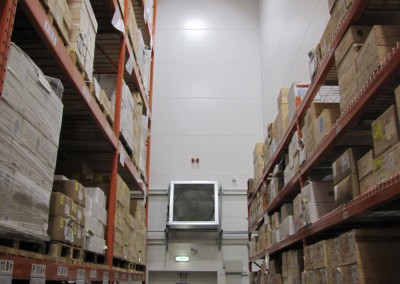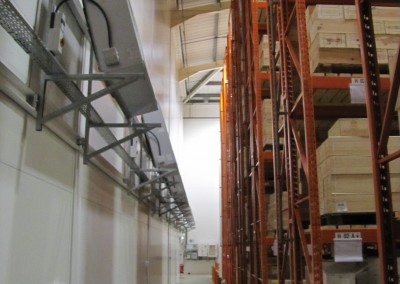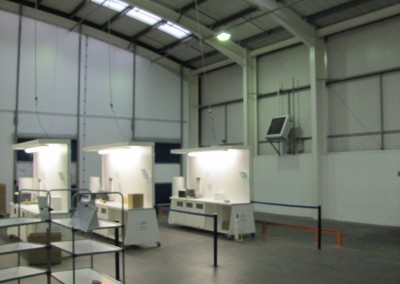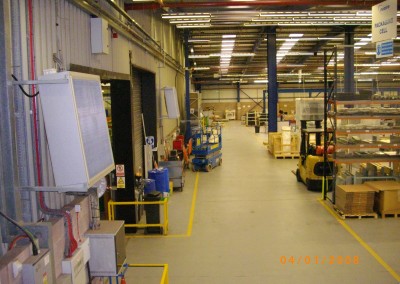INDUSTRIAL CEILING FANS VS. DESTRATAIR
One of the main goals at TEXAS ELECTRONICS is to provide our clients with the best solutions available. We do so by constantly keeping an eye on what is going on around the world and spoting innovative and efficient systems and products to bring them to our valued clients in North America. Having been in business for more than 39 years, we feel confident when it comes to evaluating and judging these products and systems. Here is a summary of what we found about thermal equalization methods…
INDUSTRIAL CEILING FANS

Propeller
If operated in accordance with the manufacturers’ recommendations, this should result in fuel-input savings in a range 8 – 12%. In most instances, most small diameter fans actually run at a slower speed than recommended so as to minimize drafts at working level. Consequently, savings are far less than predicted. When using this type of industrial ceiling fan, it is better to increase the number recommended, and run them all at a slower speed, which drives up the heating cost. Large diameter fans are usually heavy and cumbersome to install, and for the larger diameter units you might require a structural engineer’s assessment of the roof strength relative to the weight of the fan. The visual impact of these very large fans is high. These types of fans are relatively quiet in operation, but as with all industrial ceiling fans, if run too fast, they will create drafts at low level which cause them to be shut off quite frequently. They are installed at high level which complicates the installation and maintenance of the product.
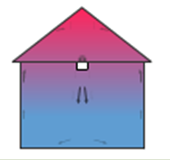
Boxed
Boxed fans when operated according to the manufacturer’s recommendations should result in fuel-input savings in a range of 8 – 10%. Most are fitted with integral thermostats to switch the fans ‘on’ and ‘off’ at the demand of a set temperature, but this has its problems. For example, if set to 23°C, the fan might switch on and off frequently. This creates the nuisance of intermittent drafts at the working level. The unit comprises a plate axial fan mounted in a steel, or fiber glass, box assembly. The fans are mounted at high level and force air at relatively high velocity to the floor. The height complicates the installation and maintenance of the product. Fan rotation speed is much higher than the “propeller” fans and this result in a high noise profile when operated at full speed. Manufacturers typically calculate the number of fans required on the basis of about 1.6 air movements per hour. As with small diameter “propeller” fans, it is better to increase the number recommended by the manufacturer, and operate them at a reduced speed, however this increases costs substantially.
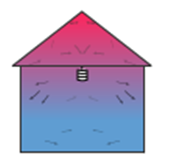
Twin-fan units
If operated in accordance with the manufacturers’ recommendations, this should result in fuel-input savings in a range 10 – 12%. This type of unit has two fan assemblies housed in a louvered cage arrangement. While one fan draws air from above, the other draws from below. The air is then blown out and down through a 360° pattern, via small-blade louvers. The system is installed at high level which complicates the installation and maintenance of the product.
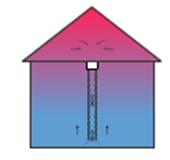
Ducted
These are very low in airflow duty and of no value whatsoever in terms of fuel-input savings. This type of fan is small, has a very low capacity motor and is ineffective. It is usually hung from roof trusses or any convenient overhead structure, and is fitted with a flexible plastic duct extending to the floor. The system is installed at high level which complicates the installation and maintenance of the product.
OUR CHOICE? DESTRATAIR!
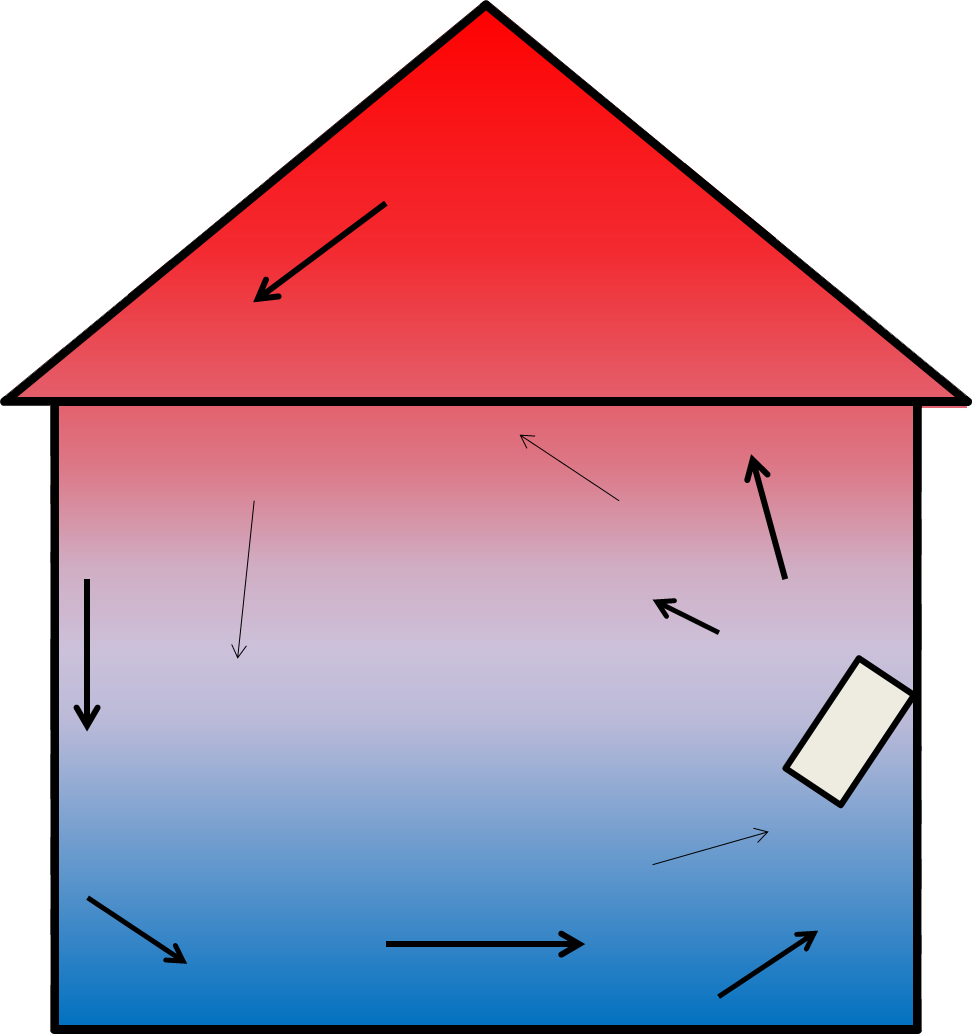
DESTRATAIR
If installed in accordance with the manufacturers’ recommendations, this should result in fuel-input savings in a range 15 – 20%. The DESTRATAIR turns conventional “de-stratification” on its head. It is unique in that the fans are fitted at low level, and project air towards the roof of the heated space. The superior performance this method allows is specifically due to the increased amount of air that can be moved, without the nuisance of drafts being created at low level. Whereas other fans have to be installed at high level, DESTRATAIR is fitted at a height of 8 – 10 feet above the floor, considerably reducing installation time and virtually eliminating any high level “Health & Safety” issues

Want to learn more about this product?
One of our experts will be more than happy to answer your questions and give you more information about our products.

